How a wine business managed challenges of expansion
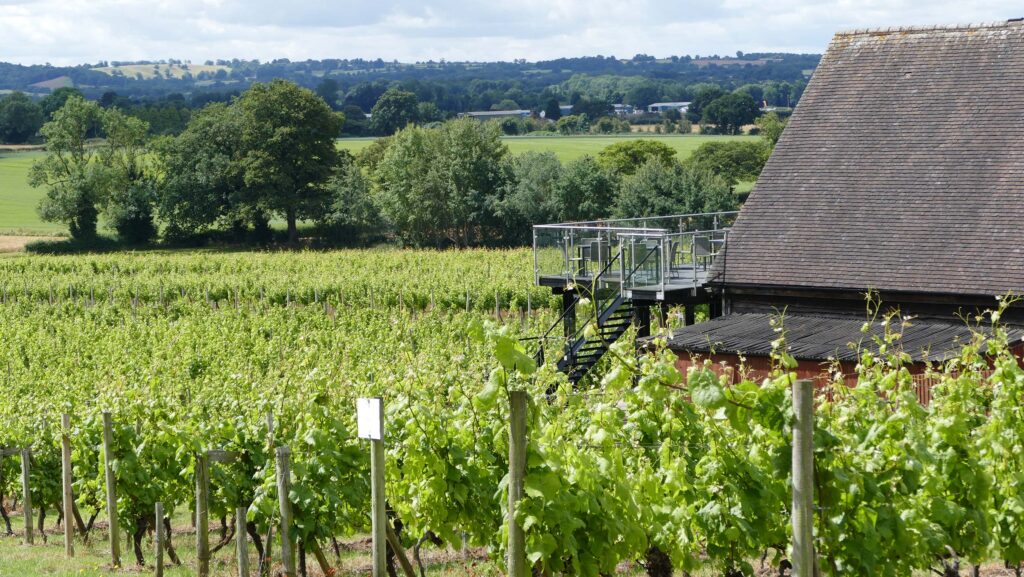 © Halfpenny Green
© Halfpenny Green Halfpenny Green Wine Estate at Bobbington in Staffordshire is run by husband-and-wife team Clive and Lisa Vickers.
The 20ha holding has grown from a hobby area of vines planted in 1983 by Clive’s father Martin, to an operation producing 250,000 bottles a year alongside visitor attractions, and employing 75 to 80 people.
While the initial planting was for personal interest rather than with any diversification in mind, the family packs in a huge amount of activity and turnover on their holding, originally part of a much larger family farm which Clive’s cousin runs.
See also: VAT and diversification – beware the pitfalls
Farm Facts: Halfpenny Green Wine Estate, Bobbington, Staffordshire
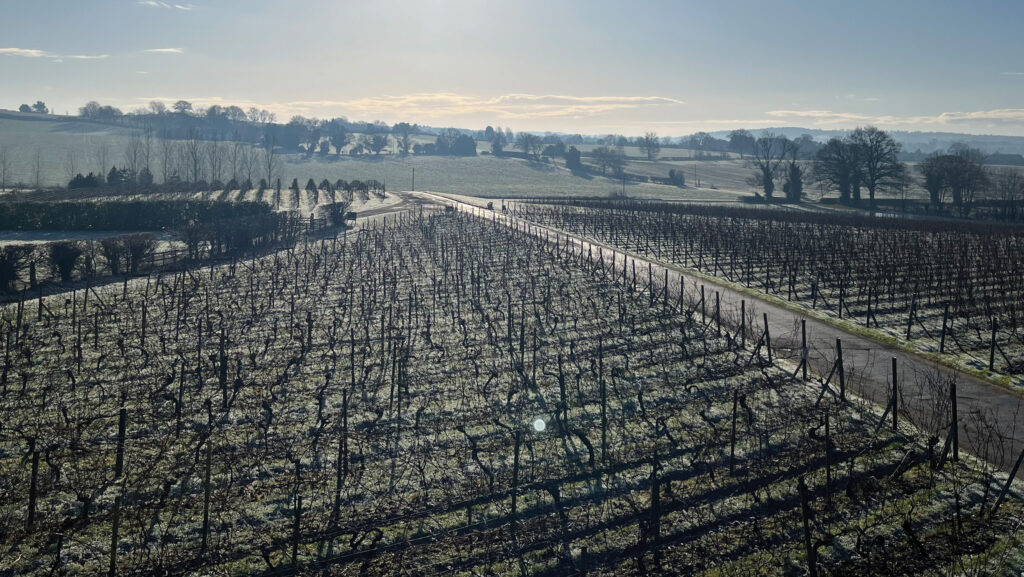
© Halfpenny Green
- 12ha vines, 16 grape varieties on sheltered south-facing slopes 250ft above sea level, with light, sandy, free-draining soil
- Rural location but with about 3 million people within half an hour’s drive, 6 million within one hour
- Producing up to 250,000 bottles a year of own-brand wine
- Further 28ha grown by others on 10-year contracts to produce grapes for the business
- Upgraded winery can handle up to 1,000t of grapes a harvest
- Pressing and bottling for 100 other vineyards from 28 counties
- Wine and gift shop, deli
- Guided tours for individuals, couples and small groups through the summer
- 200-seat restaurant
- Let units in craft village
- Three coarse fishing lakes
- Co-op sideline – under three co-operative schemes, backyard grape growers bring their grapes for pressing and can buy the resulting rose wine at a discounted price. This produces 17,000 bottles a year.
Initially the grapes were sent for processing elsewhere, but in 1994 the first winery was built on site, since upgraded in several stages as the business has grown.
Most recently, an 18t Italian wine press and state-of-the-art filtration equipment have been installed.
There has also been a big investment in solar panels, and a nitrogen plant has been installed which should pay for itself within three to four years, removing the need to buy nitrogen, which is used as a seal to prevent the wine oxidising.
A further 28ha of grapes is produced on 10-year contracts by four other growers. In addition, the winery presses and bottles the produce of 100 vineyards from across 28 counties, on contract.
The sudden passing of his father late last year means Clive has taken on management of the contracted growers formerly handled by Martin.
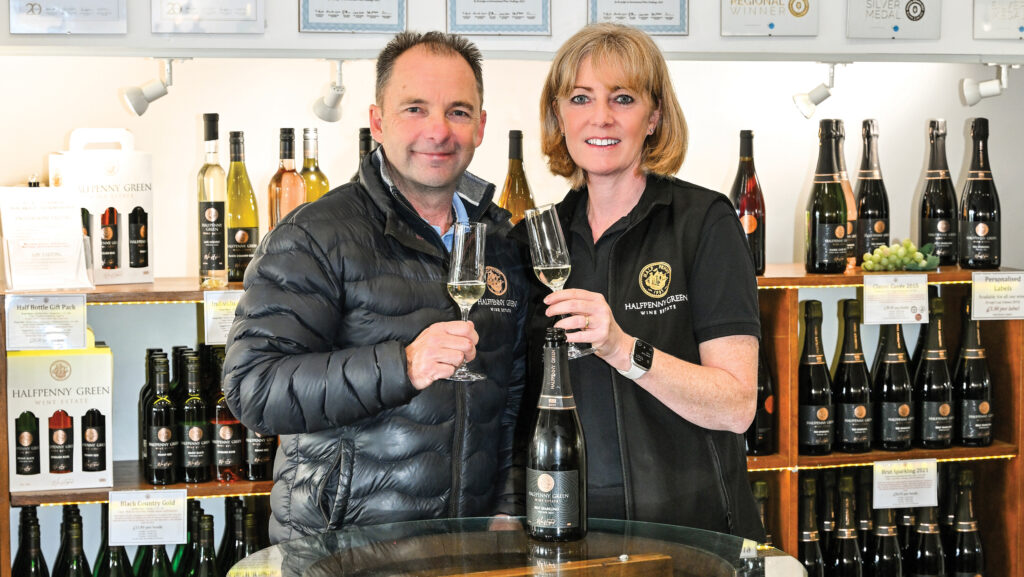
© Halfpenny Green
Multiple enterprises
Alongside the vines and winery which Clive manages, Lisa has developed enterprises which have made the vineyard a visitor attraction.
This began with a 24-seat tearoom and now includes a restaurant seating 200, a deli with a full-time butcher, and a wine and gift shop.
In addition, tastings and tours are offered, while buildings formerly housing stables, a cattery and kennels have been converted to let units which form a craft village.
Challenges
Expanding a business, especially in a new market, places demands on its owners, and when things are moving swiftly, simply coping with day-to-day demands can leave little time for stepping back and looking across the business.
Among the biggest challenges as the business has grown have been logistics and finance, says Clive.
“About 10 years ago we realised we needed a bit of help and at the suggestion of our accountant we employed a business coach who helped us put some structure into things over a couple of years. So we now have managers for several parts of the business.”
This has allowed some responsibility to be delegated, but Lisa admits she finds it hard to let go and finds herself constantly checking things, in particular the standard of offering and service to customers.
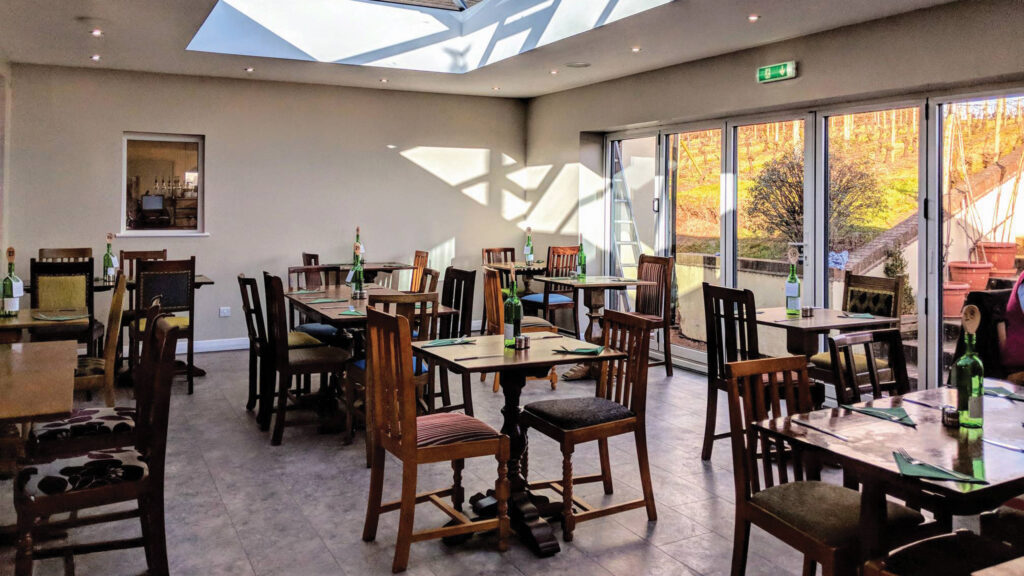
© Halfpenny Green
Regulation
Getting planning permission was a big issue in the early years, but is less so now, since vines and winemaking have been accepted in planning terms as an agricultural operation.
However, there is a high level of regulation and accreditation, as for most food and drink businesses.
This includes Safe and Local Supplier Approval (Salsa) and Food Standards Agency requirements, which cover both the wine business with regional wine inspectors, and the catering and deli enterprises.
Retailers also impose their own accreditation schemes which can be very similar to Salsa requirements but must be done separately, almost doubling the work.
“We have someone employed pretty much full-time just on Salsa compliance,” says Clive.
Environmental Health and Trading Standards are also involved, and excise duty compliance is a further requirement.
The duty rate on a bottle of English wine is £2.33 plus VAT, the same rate as for imported wine, which the sector’s representative body WineGB is lobbying on for a reduction.
Clive and Lisa have learned much on their journey. “Looking back, if I had the chance to, I would have designed the winery differently and built it 10 times its original size,” says Clive.
“But you can only do what you can do with the money you have at the time. We built it originally to 3,200 sq ft, now it’s 30,000sq ft.
“Also, we would have got more help with branding and marketing. We’ve got a great team on that now, but if we looked back at some of our old labels, I think we would cringe a bit,” he says.
Spread of customers
The business has a good spread of custom, with a high level of sales to personal customers from the on-site wine shop, plus online orders and about 150 regular off-site customers including farm shops, wholesalers, smaller retailers, pubs and restaurants.
Halfpenny Green wines are also stocked by Waitrose and Midlands Co-op stores.
Staffing
The location of Halfpenny Green is rural and with almost no bus service, recruiting local staff isn’t straightforward as they need their own transport.
However, Lisa says that as people have returned to the hospitality sector since the end of lockdown, it has become easier to add to the team. Harvesting is carried out by volunteers in exchange for wine.
Diversification tips – retail, food and hospitality
- Outside advice can help when a business is growing rapidly
- Buy in expertise that you don’t have
- Spread the customer base widely so sales are not reliant on a few large customers
- Things can change rapidly so never assume a season will be as you expect, or will repeat
- Be prepared for the compliance and accreditation burden
- As the business grows, keep things under review. For example, in earlier years, Martin, Clive and Lisa regularly went separately to farmers’ markets and food fairs, and while this helped get the Halfpenny Green name known, it was time consuming and has been rationalised. Large food fairs such as at Chatsworth, and events like the Game Fair are still part of the marketing plan
- Think how to add value, but cost this carefully and review operations. Lisa has introduced a hamper service which goes well, but rising costs mean this needs to be reviewed to ensure it brings an adequate margin.
Budget brings challenges
Last October’s Budget has brought new cost issues, with a 2% National Insurance increase from April 2026, the 6.7% national living wage rate rise and a 16% minimum wage rate rise to £10 for 18- to 20-year-olds as the government moves towards a single adult rate.
Lisa is mulling what to do about the impact of these added costs on the enterprises she manages.
“Do I employ fewer staff and risk standards of service, or do I keep the staff numbers up and put prices up?
“We had a good trade both on and off site in the run up to Christmas, and I was expecting January to be quiet as a result, but we’ve had our best January ever,” she says.
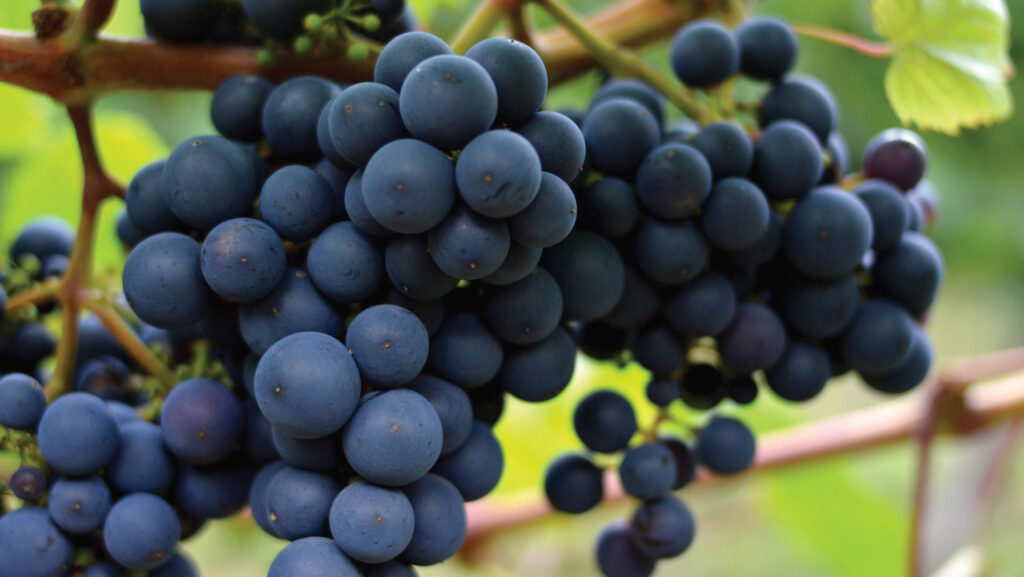
Rondo grapes, one of 16 varieties grown © Halfpenny Green
Interestingly, the customer base has shifted considerably since interest rates went up.
“We used to have a lot of young, trendy families in, but the age bracket has gone up so we have many more empty-nesters now.”
However, suppliers are already starting to put their prices up and next week brings the spring food fair, following which brochures are published in April, and suppliers like to see everything ordered by the end of June.
“We don’t know what’s going to happen, so it’s going to be very difficult to know how much to stock,” says Lisa.
“Gifts are not such a problem as they are not perishable, but you don’t want to be carrying more than you have to.”
Looking ahead
It’s clear this business does not intend to stand still.
Lisa would like to be able to offer accommodation to complement both the wine business and use of the fishing lakes, so that is under consideration.
Clive and Lisa’s daughters, Imogen and Emily, are in their final and first years, respectively, at Harper Adams.
Both have spent time working in the family business outside of term time and currently plan to join the business.
Their parents welcome this but say that experience working outside the family business is also valuable, and they are reluctant to write any scripts at this stage.
The family planted 1ha of vines at Harper two years ago. “They are going to name it the Martin Vickers Vineyard,” says Clive.
“More importantly, it is the start of new courses in viticulture and viniculture, which is very important for the future of English wine.”
